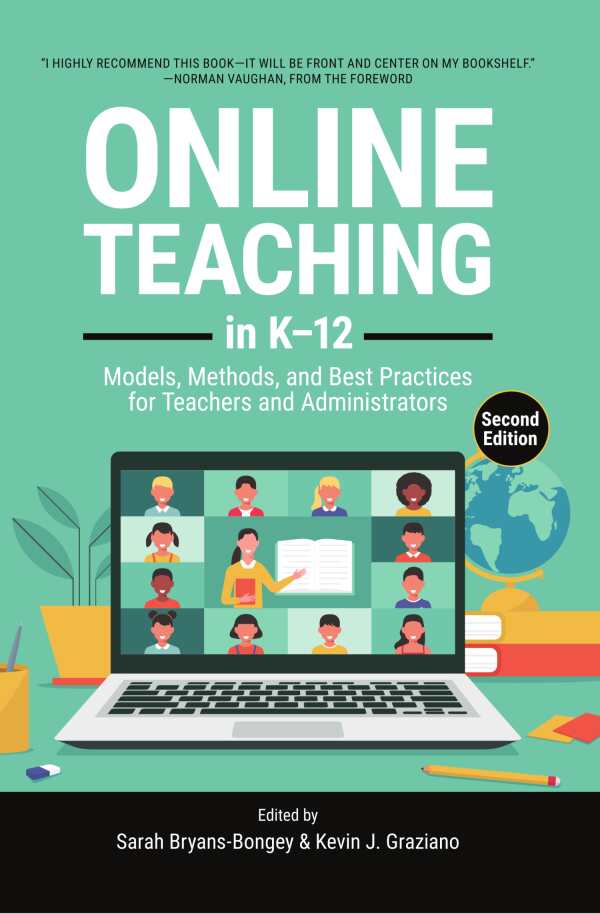
Online Teaching in K-12
Models, Methods, and Best Practices for Teachers and Administrators
Online Teaching in K–12 is an encouraging educators’ guide to making the most of online learning.
An authoritative and comprehensive educators’ resource, Sarah Bryans-Bongey and Kevin J. Graziano’s Online Teaching in K–12 outlines strategies and tools for effective online courses and programs.
During COVID-19 shutdowns, online curricula expanded in elementary, middle, and high schools, the book notes, initiating immediate and vast demands for informative resources for pre-service and in-service teachers. Herein, instructional strategies and numerous online tools are covered to provide a framework for teachers, administrators, instructional designers, and other policymakers. Organized into three parts covering the basics of online education, the variety of students’ needs, and putting its principles into practice, the text draws upon industry research and academic studies to make its recommendations. Extensive references appear at the chapters’ ends, and twenty-nine experts share their own perspectives on online teaching and student learning for further support.
The book’s topical approach is broad. It includes detailed reviews of learning management system (LMS) features, special education strategies and assistive learning technologies, and ways to incorporate mobile apps for cogent student assessments. It makes a plethora of suggestions for classroom tools, too: Flyers can be made using Smore; websites can be crafted using Wix; AI tools like Perplexity and Gemini are recommended for augmenting research. Some subjects are covered in excessive detail, though, resulting in lulls in the text’s progression. Further, there are instances of redundancy within and between chapters, and the book’s bevy of acronyms is stultifying.
Still, the book is cohesive on the whole, encouraging educators throughout to stay informed and maintain strong communication with their students for optimal learning outcomes. For instance, a chapter addressing special education needs works well due to its lucid organization around five key issues necessary for successful learning, providing additional context on universal design for learning (UDL), Individualized Education Programs (IEPs), and ensuring “learner independence and self-regulation.” Its progression is clear and logical, and its use of case studies is edifying, as with two examples of flipped learning in the classroom. Further, its identification of online tools and mobile apps beneficial to teachers and learners makes it a useful resource. Artificial intelligence is also handled with nuance, in terms of both its benefits and the challenges it presents, reinforcing the overarching premise that informed online instruction can convert into academic achievement.
A detailed and pragmatic educators’ handbook, Online Education in K–12 includes actionable strategies for leveraging online resources and tools for student success.
Reviewed by
Katy Keffer
Disclosure: This article is not an endorsement, but a review. The publisher of this book provided free copies of the book and paid a small fee to have their book reviewed by a professional reviewer. Foreword Reviews and Clarion Reviews make no guarantee that the publisher will receive a positive review. Foreword Magazine, Inc. is disclosing this in accordance with the Federal Trade Commission’s 16 CFR, Part 255.
